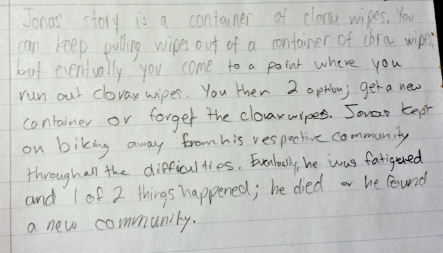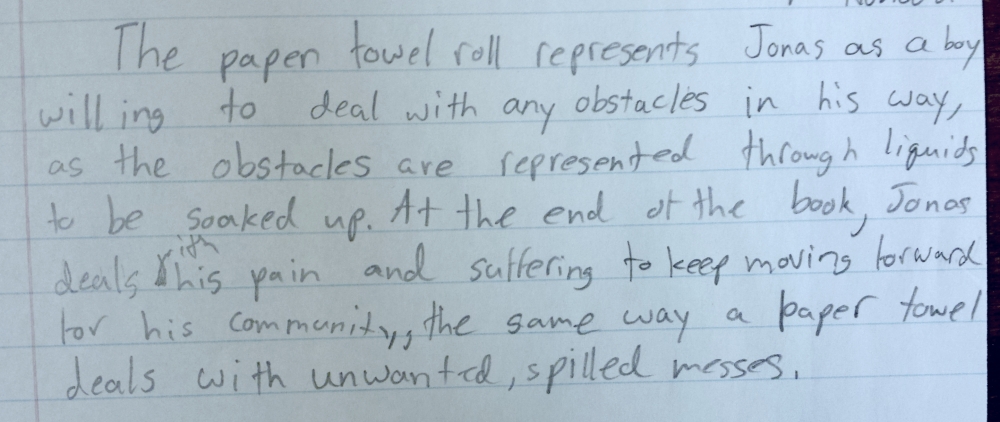In an era of critical thinking, higher level thinking, abstract thinking, inferential thinking, complex thinking, thinking outside the box, problem-based thinking, text-dependent thinking… you get the idea. Today’s students are expected to think. As teachers, it can be difficult to find strategies to balance the development of the adolescent brain and highly interactive lessons students actually want to engage.
If you aren’t familiar with Kelly Gallagher, make sure you check out his website for information about his books and several excellent free resources for students and educators. While visiting my sister at the University of Missouri a few years back, I picked up his book titled Deeper Reading: Comprehending Challenging Texts, 4-12. One of the strategies I found incredibly easy to implement was the use of metaphors.
 My nephew (pictured on the right a year ago) is coming up on his second birthday in just a few weeks, and I’m amazed at how much this little munchkin has grown. He is constantly learning about the world around him. While our intellectual understanding grows as we age, many of the basic and simple processes of how we learn remain the same.
My nephew (pictured on the right a year ago) is coming up on his second birthday in just a few weeks, and I’m amazed at how much this little munchkin has grown. He is constantly learning about the world around him. While our intellectual understanding grows as we age, many of the basic and simple processes of how we learn remain the same.
Our brains take in new information by trying to connect it to ideas and concepts already understood. This is nothing new. Researchers have long shared the importance of making connections whether it be improving reading comprehension or developing stronger vocabulary.
The concept is simple.
Take two completely different items/concepts and find a way to connect them.
Below are photographs of my students metaphor statements regarding the ending of The Giver by Lois Lowry. I passed out random objects I had found within the room: wet wipes, a stapler, a lizard stuffed animal, a deck of cards, and a dry erase marker. Using everyday objects works best as it will push your students thinking using objects that are familiar to them.




When your students have to figure out how the object relates to a part of a plot diagram, a character, or any of the elements of fiction within a piece of literature they’ll demonstrate their full understanding and really THINK. I scaffold the lesson by first modeling an example for the class. To increase engagement, I have the students pick an object out for me to use from a box full of the objects I plan on distributing. Then, I think out-loud as I model questions I may ask myself when trying to figure out how to construct my metaphor. What is the purpose of the object? What can the object do? Does the object have unique characteristics?
Next, I write on the board (or pull up on a presentation) the concept I want students to analyze. In this particular Giver lesson, I want students to analyze the one of the following characters at the end of the novel: Jonas, The Giver, The Community, Gabriel. Students are directed to have one person from their group come up and select an object. A timer is set to help establish a sense of urgency, and I walk around talking to groups and helping as needed. After all the groups have finished their metaphors they share them with the rest of the class.
The great thing about this reading strategy is you can make it a simple and quick activity, or you can make it a more in depth analysis. Next year I plan on having my students use their selected object and create a metaphor for the character at both the beginning and the end of the novel. Require students to find text evidence to support their metaphors and you have a well-rounded common core, research-based lesson!
Love this idea!
LikeLike
Let me know if you use it in your classroom. I would love to collaborate again with you!
LikeLike